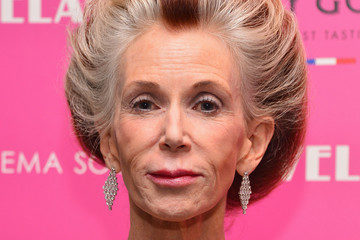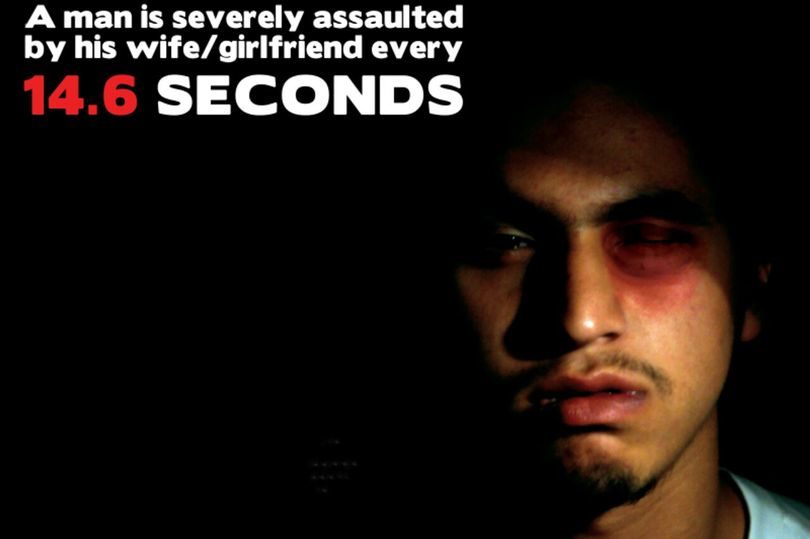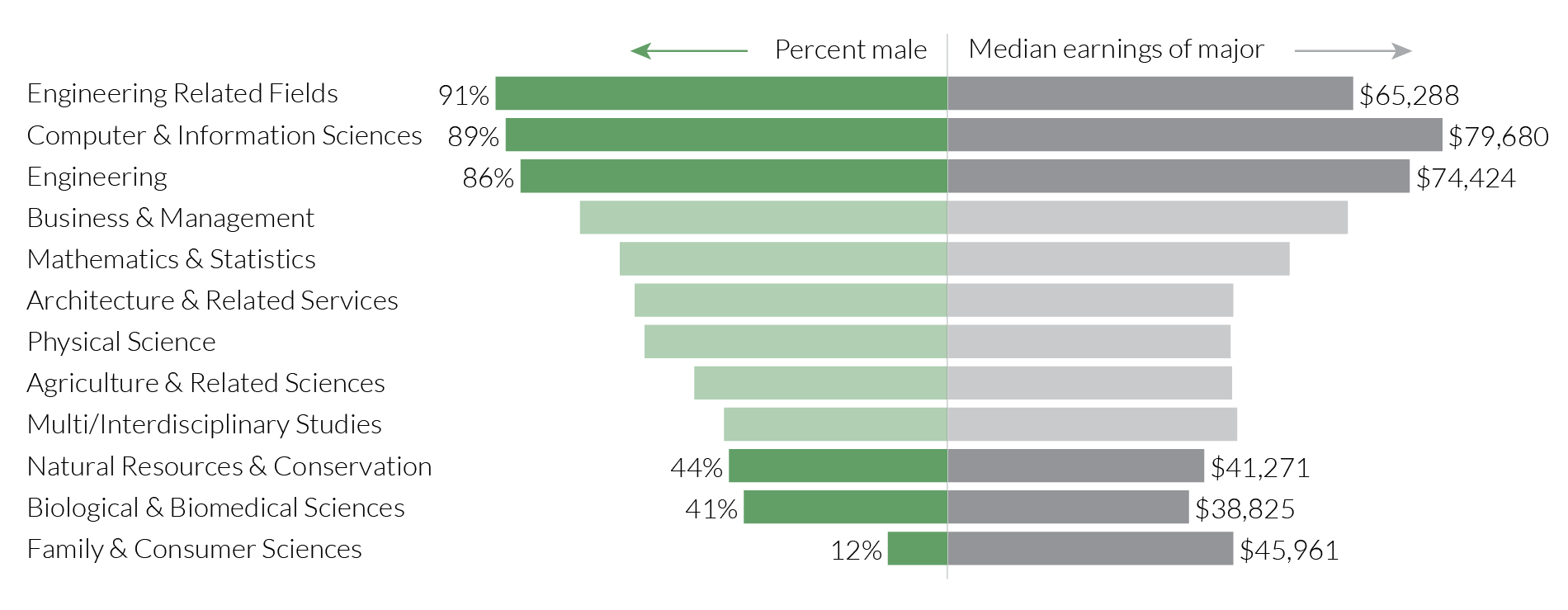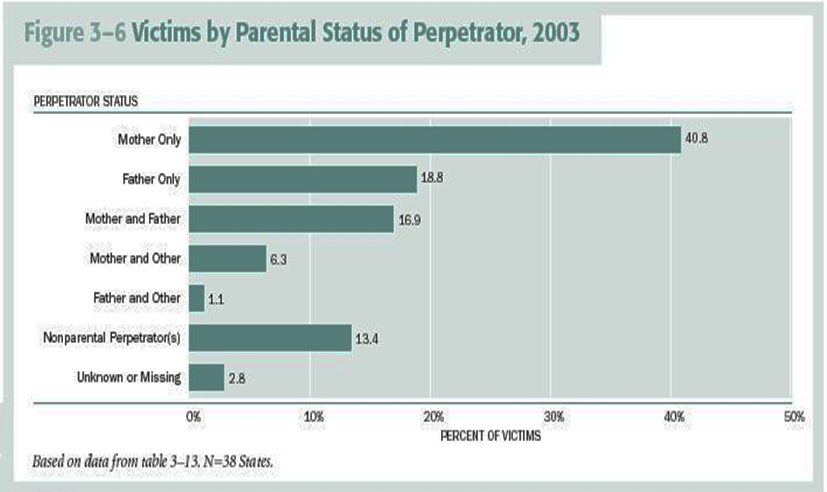"Sexuality is to feminism what work is to Marxism... the molding, direction, and expression of sexuality organizes society into two sexes: women and men. This division underlies the totality of social relations."Some years ago I began an unexpected journey down the feminist rabbit-hole. It was in 2014 when my Grandma asked me about the winner of the Eurovision Song Contest and I found myself unable to explain who the winner was: Conchita Wurst, a man who dresses like a woman and wears make-up, but sports a beard.
Catharine MacKinnon, Toward a feminist theory of the state
In hindsight, I realize this journey was a painful process, probably because it touched something deep in me. The data I discovered were in conflict with my protective instinct, something that is deeply wired in males. While females are hardwired to nurture and care, men are wired to provide and protect.
So when a man is exposed to victimized women (as depicted by the feminist narrative), it triggers his core instinct and social duty to protect. In addition, the instinctual hijack and deep cultural values tend to inhibit any proper intellectual functioning.
The above might be one of the reasons why the victimhood of women is so central to the feminist ideology. It might also be one of the reasons why so many men blindly embrace feminist narratives.
Feminism didn't invent anything by using the victimization of a population to further its political agenda. Long before the feminists, the French revolution was justified by the victimization of the 'tiers état' (the farmers), the Bolshevik revolution by the victimization of the proletariat, and the Nazi revolution by the victimization of 'Aryans'. But history shows that the revolutionaries, whether in France, Russia or Germany, never cared about the alleged victims. Each time the victimized population ended up in a far worse situation after the 'revolution' than before it.
The alleged victims are only a pretext to point the finger at oppressors (the nobility, the clergy, the Jews), destroy them and seize their rights and assets (leaving aside their duties), and that's exactly what we are witnessing today with the feminist movement.
We are bombarded daily by stories about affirmative action, women's rights, women's empowerment, women's initiatives, women's organizations, women's events, women's shelters, women's marches, women's safe spaces... all these political claims are based on one single foundation: the victimization of women, which is widely taken for granted. But does the victimhood Feminism proffers actually exist?
1/ Women are the victims of domestic violence
Narrative: It is widely believed that domestic violence is a rampant epidemic affecting a vast proportion of US households:
"Half the women in the US are abused."According to the widely-accepted narrative, most of the domestic abuse epidemic is due to men:
Langley & Levy 1977, Wife Beating: the Silent Crisis
"Women were seven to fourteen times more likely to report that intimate partners had beaten them up, choked them, threatened them with weapons, or attempted to drown them."Reality: First and foremost, domestic violence affects a minority of couples. Depending on the method and samples, between 85 and 99% of US couples do not experience any kind of domestic violence.
Arias et al, .2002
In addition, males are far from being the sole perpetrators of domestic violence, quite the contrary. Unilateral violence (i.e. non-reciprocal violence) is more often committed by wives than by husbands:
"70% of the perpetrators of unilateral conjugal violence are female."The higher prevalence of domestic violence perpetrated by women also applies to severe assault:
Whittaker et al., 2007 CDC national survey
In the most comprehensive domestic violence study ever conducted (a meta-analysis with a sample size 64,000 subjects), the conclusion was that:
- 10% of married couples and 13% of cohabitating couples reported females using severe violence when the male partner was non-violent (husband battering)
So husband-battering was about double wife-battering
- The reverse pattern (wife battering) was 6% -7%.
Stets and Strauss, 1989/1992
"Women are slightly more likely than men to use intimate violence" d' = .05Interestingly, the prevalence of domestic violence committed by females is more pronounced in younger generations, as shown in a study conducted among college students (19 countries - 9,549 subjects).
Archer, 2000
"On average, female partner violence had a 21% higher incidence than male partner violence."While the myth that domestic violence is primarily perpetrated by men is still widely accepted, even feminists recognize that women are the main perpetrators of domestic violence.
Douglas and Strauss, 2006
"Women are doing the battering, as much or more than men."Confirming that the highest prevalence of domestic violence is committed by females, and totally removing any male influence from the equation, are the statistics about lesbian violence. Lesbian couples have the highest violence rate, about 50% higher than the violence prevalence in heterosexual couples.
Betty Friedan, It Changed My Life: Writings on the Women's Movement
"Lifetime prevalence of rape, physical violence or stalking by an intimate partner, focusing for the first time on victimization by sexual orientation. In their study, there was a victimization prevalence of 43.8 percent for lesbians."Conclusion: domestic violence is not as rampant as depicted. Over 95% of couples report no intimate violence (Laroche 2005). For the minority of couples where violence has occurred, females are more frequently the perpetrator than males. This trend is worsening and we observe higher female-perpetrated violence in younger generations.
CDC 2010 National Intimate Partner and Sexual Violence Survey
One factor in why men batter less than women is likely the strong taboo around men beating women:
"Only 2% of North American men agree with 'it is ok to hit your wife to keep her in line'."Conversely, women beating men doesn't seem to be taboo. Such behavior is actually perceived positively by most witnesses who see it as a sign of empowerment or harmless self-defense. Watch this interesting social experiment where women beat men (in a public park) and the supportive reactions of the witnesses:
Simon et al., 2001
Now, compare this to the reverse situation where a couple (portrayed by actors) in a London park gets into a heated argument and the man begins to physically abuse his girlfriend. Onlookers, male and female, immediately notice and take action:
2/ Women Are The Victims of Rape
Narrative: According to feminist voices widely echoed by mainstream media, the Western world is undergoing a rape epidemic that stems from a deeply-rooted 'rape culture'. Basically, all men are rapists, at least in potential if not yet in actuality.
"Men, by and large, have a rape switch. All men are capable of rape."The 'figures' provided to back up the 'rape epidemic' are troubling.
Greg Laden
An American woman has allegedly a 26% chance of being raped in her lifetime. The situation on campuses is even worse: allegedly, 1 in 5 women will experience sexual assault in college. For example, the rape rate in Berkeley was estimated at 3,000 cases per year (Gilbert 2005). So, with 20,000 female students over an average 4-year period, the overall rape rate is more than 50%.
Reality: Let's take the Berkeley case. Out of the 3,000 projected rapes per year, only 40-80 students seek guidance each year from the rape counseling center and only two reported to the police. (That's a report, not a conviction)
When Koss' victims were asked directly,If the rape rate on campus was more than 50%, do you think female students would participate in 'undie runs', like the one depicted in the image on the right?
- 73% who had had attempted unwanted sex did not believe they had been raped
- 42% had sex later with the man who "raped" them
Dutton, 2008
The Berkeley over-inflated rape epidemic is not an isolated case. The report on Violent Victimization of College Students is based on actual police reports (not claims) and tells a very different story from the Berkeley narrative.
"Between 1995 and 2002, the DOJ found that there were six rapes or sexual assaults per thousand per year. This means a 2.5% annual rate rape."In addition, the same DOJ statistics show that the overall rape rate is in sharp decline: since 1995, the rate of female rape or sexual assault has decreased by about 60 percent.
DOJ - report about Violent Victimization of College Students
Interestingly, rape analyses virtually always focus on female rape, as if male rape did not exist. In fact, male rape did not exist legally until 2013. Before that, the FBI definition of rape explicitly excluded men from the victim count:
[rape is] "the carnal knowledge of a female forcibly and against her will."Once the new definition was applied and men were not excluded from sexual assault or as potential rape victims, the figures provided by the CDC (US Center for Disease Control) paint a much more balanced picture:
UCR - FBI
"Rates of non-consensual sexual contact basically equalized, with 1.270 million women and 1.267 million men claiming to be victims of sexual violence."The new definition includes instances where men were made to 'penetrate'. Because of cultural factors, we generally assume that if a man has an erection, he must want sex. After all, men are sexually insatiable, right?
CDC
So, imagine for a second that we apply the same logic to women, knowing that a number of women show signs of physiological arousal during rape:
"I've assisted more young women than I can count with this very issue...There have been very few studies on orgasm during rape, but the research so far shows numbers from 10% to over 50% having this experience."
Popular Science

This point is illustrated by the following South African case where three women kidnapped a man, held him for three days and gang-raped him while forcing him to take Viagra and energy drinks. That had been the 5th such incident in South Africa of abduction and gang-rape of a male by a female trio in the space of a couple of years.
The CDC study showing that sexual violence is equally distributed between men and women doesn't provide the whole picture because the prison and jail data are not integrated in their report.
Compared to the rest of society, prisons exhibit very high rates of sexual violence, with a prevalence varying between 9 and 23%, depending on the sources.
While common belief portrays rape in prison as a male-to-male crime, the few surveys about sexual assaults in prison reveal unexpected results:
"Those surveys turned up the opposite of what we generally think is true. Women were more likely to be abused by fellow female inmates, and men by guards, and many of those guards were female.The number of total sexual assaults perpetrated in US prisons comes straight from the Department of Justice and dwarfs the number of sexual assaults committed outside prison:
For example, of juveniles reporting staff sexual misconduct, 89 percent were boys reporting abuse by a female staff member. In total, inmates reported an astronomical 900,000 incidents of sexual abuse."
Stemple and Mayer, 2014
"More men are raped in the U.S. than women, according to figures that include sexual abuse in prisons.
In 2008, it was estimated 216,000 inmates were sexually assaulted while serving time, according to the DOJ figures. That is compared to 90,479 rape cases outside of prison."
The Guardian
3/ Women Earn Less Than Men
Narrative: Feminists and mainstream media have been repeating for decades that women are paid lower wages compared with men. Even Barack Obama, in his 2016 State of the Union Address, repeated the feminist mantra according to which "women make 77 cents to every dollar a man makes." This is naturally held up as 'blatant proof' of systemic sexist discrimination against women.
Reality: First, let's note that in the 1970s women were said to make about 65% of what men did. Today that number is about 80%. So, whatever causes the wage gap, it has narrowed since the 1970s.
Obama's 77% figure is simply the difference in median annual incomes of full-time male and female workers. It's comparing apples and oranges, since it does not account for differences in occupations, positions, education, job tenure or hours worked per week.
When such relevant factors are considered, the wage gap narrows to the point of vanishing. More than vanishing, in some countries, like in the UK, the pay gap is inverted:
"When hourly rates are compared, a recent UK survey reveals that, the pay gap is inverted from 20 to 40 years old. Figures compiled by the Press Association show that between the ages of 22 and 29, a woman will typically earn £1,111 more per annum than her male counterparts. The 'inverted pay gap goes on for workers between 30 and 39 years old with women earning 0.2% more than men."These figures only take into account the hourly rate and leave aside the fact that men and women don't work in the same way.
The Guardian
Below are factors that generally favor men and help explain why men earn more. It shows that men tend make more money not because they are privileged but because their work input is different. This list was compiled from Warren Farrel's excellent book, Why Men Earn More: The Startling Truth Behind the Pay Gap - and What Women Can Do About It:
- Men gravitate more towards higher-paying occupations in technology and hard sciences (e.g., petroleum engineer).
- Men choose higher-risk, higher paying occupations with greater safety risks for occupational injuries and fatalities (e.g., oil field worker, roofer, and logging).
- Men are more willing to work outdoors in uncomfortable, physically demanding work environments (construction, oil field workers, commercial fishing, logging).
- Men are more willing than women to choose demanding, intense jobs where you can't check out at the end of the work day (e.g., corporate attorney, senior White House staff).
- Men select jobs with higher pay but with lower personal fulfillment (tax accountant).
- Men select jobs with higher financial and emotional risks (e.g., venture capitalist).
- Men are more willing than women to work the worst shifts during the worst hours.
- Men often choose higher paying sub-fields (e.g., surgery and anesthesiology).
- Men are more willing to work in dirty or unpleasant environments with minimal human contact (e.g., prison guard, steel worker, truck drivers).
- Men work longer hours per week and more weeks during the year than women on average.
- Men more frequently than women invest in updating their skills with greater financial payoffs (e.g., master's degree in computer technology vs. master's degree in education).
- Men are more likely than women to have more years of continuous experience in their current occupation.
- Men are less likely than women to be absent from work (doctor's visits, sick days, taking time off when children are sick, etc.).
- Men are more willing than women to tolerate longer commute times.
- Men are more willing to relocate, especially to undesirable locations at their company's request.
- Men are more willing than women, on average, to travel extensively on the job.
- Men are more willing than women to take the risk of a variable income, e.g., to be paid by commission vs. a fixed salary.
- Men often produce more output, e.g., scholarly research articles for university professors
Eventually, even feminists had to backtrack on years of propaganda and finally admit that the pay gap is mostly due to women's choices:
"The American Association of University Women (AAUW) has finally admitted that the 'gender pay gap' is caused primarily by women's choices, not discrimination."This backtracking is little more than lip service, however, since the pay gap myth is still widely propagated in the mainstream media, academia, and schools.
Leadership Institute
4/ Men Are Child Abusers
Narrative: Men are inherently violent. They beat their wives and they beat their children. That is what Kahneman and Tversky (1982) called a 'representative heuristic', where batterers have the attributes of maleness, and they alone pose a risk to the child.
Reality: Actually, two major studies about violence against children drew very similar conclusions. Mothers are more likely than fathers to be violent towards children.
children are almost three times more exposed to violence from mothersIn a Health Canada survey from 2001, mothers were found to commit 4 out 5 types of violence more frequently than fathers:
- 4.3% exposed to severe male to female violence
McDonald et al., 2006
- 11.4% exposed to severe female to male violence
Biological mothers (as compared to biological fathers) are more likely to be the substantiated perpetrator of:An American survey on child maltreatment conducted in 2004 among more than 700,000 individuals revealed an even larger gender gap than the Canadian survey: it found that mothers are more than twice as likely as fathers to mistreat their children.
- physical abuse (47 vs 42%)
- neglect (86% vs 33%)
- emotional maltreatment (61% vs 55%)
The biological father is the most likely perpetrator of sexual abuse (15% vs. 5%).
- multiple categories (66% vs 36%).
Dutton, 2008
Mistreatment of children, perpetrated by mothers, is higher in terms of prevalence and also in degree. According to that 2004 American survey, among all cases of children who died of maltreatment in 2003, 30.5% were caused by the mother and 18.2% were caused by the father.
The fact that mothers tend to spend more time rearing children than fathers is likely a factor of course, but these data dispel the myth that it is predominantly men who are cruel to children.
5/ Female accuser = Victim
Narrative: When it comes to matters as personal and sensitive as sexual abuse, women have no reason to lie. In fact, it takes a lot of courage to overcome the shame and share such painful memories.
Reality: Men and women both lie. This is exacerbated when the legal system excessively protects the accuser, strips the accused of his most elementary rights, and reverses charges where the burden of proof is on the accused rather than the accuser. The concept of being 'innocent until proven guilty', which has prevailed for centuries, has been turned on his head. In a dreadfully totalitarian spin, many men are today deemed guilty until proven innocent.
Today women are encouraged by social workers and attorneys to file accusations against partners and spouses, they have financial incentives (getting the house, alimony), they have total anonymity (while the name of the accused is widely reported), they are immune to being sued for making false accusations, civil courts offer lower standards of evidence, and more.
Papers about the politically sensitive topic of false rape accusations are scarce, but they nonetheless exist:
"Purdue University sociologist Eugene J. Kanin found that '41% of the total disposed rape cases were officially declared false' during a nine-year period, "that is, by the complainant's admission that no rape had occurred and the charge, therefore, was false.Here are two examples of blatant and fully-documented false accusations. First, a cheerleader calls the police and claims her boyfriend choked and beat her. The police are about to arrest the man when he provides a video showing that it's actually the exact opposite to what happened:
A follow-up study at a university found 50% of accusations were false, again purely by the recantation of the accuser.
Unrecanted accusations certainly put the actual percentage of false allegations much higher. Kanin concluded that 'these false allegations appear to serve three major functions for the complainants: providing an alibi, seeking revenge, and obtaining sympathy and attention'."
Stephen Baskerville, The New Politics of Sex
In the second case, the girlfriend of a young lawyer threatens to make a false domestic violence accusation against him in order to get him out of their house:
How many other cases are there where the men did not gather evidence of false accusations, and so ended up in prison solely based on those false accusations?
A critical factor when lying to the authorities is whether or not the lie will be believed. The following paper assessed authorities' biases in domestic violence cases, depending on whether the perpetrator was a male or female:
These surveys show that men are very unlikely to report violence (rape, domestic violence, child maltreatment) committed by their spouse because, at best, they won't be believed and, at worse, they are the ones who will end up behind bars. Interestingly, that is precisely what many women claim happens to them when they report rapes.
- When a woman called the police to report IPV (domestic violence), the man was ordered out of the house in 41.4% of cases. When a man called, the woman was ordered out of the house in 0% of cases.
- When a woman called, the man was threatened with immediate arrest in 28.2% of cases. When a man called, the woman was threatened with arrest in 0% of cases.
- When a woman called, the man was threatened with arrest at a later date in 10.7% of cases. When a man called, the woman was threatened with arrest at a later date in 0% of cases.
1985 US National Family Violence Survey, carried out by Murray A. Straus and Richard J. Gelles
- When a woman called, the man was arrested in 15.2% of cases. When a man called, the woman was arrested in 0% of cases. In 12.1% of cases when the man called, the man himself was arrested.
Conversely, women are encouraged to make reports because their allegations (whether true or false) are more likely to be believed, and even if the allegation is false, they won't face any legal repercussions.
As a result, all the above statistics are probably biased by male under-reporting and female over-reporting. Taking into account this reporting bias would further increase the prevalence of domestic violence, child maltreatment and rape perpetrated by females.
An example perfectly illustrates the very Machiavellian effects of the feminist lies: foster care. Those facilities are, in theory, designed to protect children from maltreatment experienced at home.
The prevalence of false allegations about child abuse during custody disputes is strikingly high: 55%. So, the majority of the cases are at best distorted, at worst purely fabricated.
But false allegations of child maltreatment can lead to the very real placement in foster care of a child who had until then lived a peaceful life, free of neglect and violence. In foster care, the child will probably experience a far less peaceful life:
"[There is] 10 times the rate of physical abuse and more than 28 times the rate of sexual abuse of children in group homes than in the general population. "It is more than a little ironic (and decidedly tragic) that the result of feminist exaggeration around child abuse in the family unit is the facilitation of the removal of children from safe family homes to placement in foster care facilities where the child is most likely to experience abuse.
Stephen Baskerville, The New Politics of Sex:
Conclusion
Rape, domestic violence and child abuse are confined to a small part of the population and, overall, the figures reveal a general decrease. It's also clear that the gender gap is grossly distorted. Men and women earn money, perpetrate rape, batter and abuse their children in comparable proportions.
This is a very important point and should prevent any kind of gender-oriented generalizations. Figures show that a small percentage of adults do act violently. The most important predictors for such behaviors have little to do with gender but are strongly correlated with factors like personality disorders, negative emotionality, trauma experienced during childhood, etc.
Despite this gender equality in terms of violence and salary, the upward trend of female-perpetrated violence in recent years is noteworthy.

Here you might see the very Kafkaesque nature of the whole feminist movement. The feminists fantasize about a world dominated by rape culture and violent men, yet they are creating almost the opposite: a world where women increasingly embrace crime and violence against men, the people to whom those very same crimes were wrongly ascribed in the first place.
There will always be pathological individuals around, along with their destructive ideologies. That is something we cannot change. What we can change is how we perceive and address this problem. These are the same pathological individuals that create revolutionary movements by pointing the finger at a scapegoat population (the nobility, the bourgeois, the Jews).
It's a diversion, plain and simple, that channels people's justified anger towards the wrong culprit: the scapegoat instead of the pathological puppet masters.
Feminists tell women that all of women's problems are due to men. This scapegoating technique can be very effective because it offers a very comfortable lie, which is then projected onto the other and in doing so exonerates women of any responsibility.
This is the very core of the feminist/postmodernist credo, where the other is hell, the other is the source of all suffering, the other is domination. I think that the take-away message is just the opposite; let's stop projecting onto others our own weakness, fears and shame; let's stop trying to change the other with our arbitrary, despotic and dystopian vision of what good is.
Let's focus on the only thing we can potentially change - ourselves - and instead of feeding our self-importance - whether expressed in the form of self-pity, victimizing, grandeur or guilt - let's take responsibility for our lives and our societies and see the world and ourselves not as we would wish them to be, but as they are. Only from a position of full understanding of ourselves and others can we ever hope to make the right decisions that result in a better world for all.









Reader Comments
at last, a look at the BIG picture. Your article seems objective to me. I'd like to share the youtube channel of Diana Davison [Link] who started the Lighthouse Project to help men falsely accused of rape. I am going to share your article on that channel, it deserves to be widely read.
Which may in fact mask something else...
The taboo and intensely problematic subject of a lot of women's desires to be 'taken' by a man.
Whatever you do, don't let that f*cker back out of the bag.
There's nothing new about it. And, even better if those 'controllers' can play both sides.
I wasn't talking about violence, you bumpkin. I was talking about as-it-plays polarity, the yin and the yang of it. Active and passive.
Saw the spate of rape accusations - mostly somewhat belated - against prominent figures and wondered why this, why now. Ah, apparently we are about to endure the fifth wave of the feminist revolution (first wave: suffragettes 1880s, second wave: flappers 1920s, third wave: Rosie the Riveter 1940s, fourth wave: abortionists 1970s).
As a young mother during the 1980s, after the abortionist wave, I was appalled to discover that what the feminist movement had done for me was double my responsibilities and make my life far more complicated than it would have been without these "new" ideas. (Women in the 1600s and 1700s already had many of the "rights" feminists were screaming about, until they opted for the more "gentile" Victorian mode of life. And, make no mistake, it was a choice.) Thanks to the feminists, I felt inferior because I couldn't juggle a full-time job outside the home and two children. My response to the tidal forces ripping me apart was to be a stay-at-home mom for 12 years - the only one for miles around, as attested by the many children who found their way to my house because they were home alone or in the care of an only slightly older sibling.
I was in high school during the abortionist wave and studying, among other things, the French Revolution. After spending months reading about the famines, violence, the huge gap between rich and poor and how terrible the monarchy was not to fix things, I came to feel terribly sorry for the lower classes. However, the final lesson of the term dealt with the aftermath. Nothing prepares a 15-year-old for the discovery that all that struggle and so many guillotined people changed NOTHING. A few years after the revolution, the French had not just a king but an emperor, and the leaders of the revolution were doing the same horrible things that had been done under the old monarchy. The object lesson was that violent revolution only changes the FACES of those in power, not the way power is wielded.
In fomenting what promises to be a nasty series of societal changes, the MeToo movement is simply adopting and perpetuating the worst aspects of what they think the patriarchal order stood for. They seem to be forgetting that, in the distant past in those societies where women seemed to have prominence, they were matriFOCAL, not matriARCHAL. Women did not rule, they guided for the good of all...and sex was an act of bonding, not of power.
As an aside, have you seen how the founders of radical feminism (and most radical feminists today) look like? They hardly look like women. It's almost as if their deep hatred of men actually comes from their jealousy and frustration at either:
– not being born a male
or
– not being able to get a (normal, decent, fully functioning) man.
… So, they project their own self-hatred onto men. IOW, their motto seems to be: "if you can't get it or become it, destroy it". Although I'm a bit sarcastic here, there might be some truth to it… no?
-- not being able to get a date on Saturday night
Scientifically, this is rubbish. You belong with the dinosaurs, in the days when thinking was often done in the tail.
Otherwise, when we get to this part: Everyone might assume that you simply have an emotional investment in the topic.
Statistics above were cherry-picked, but that's to be expected in an editorial. The 'Kanin' statistic around 'false accusations' is notably dubious and has been thoroughly criticized over the years; conflating 'recanting' with 'being intimidated by law enforcement, among others' is intellectual fraud.
Probability and statistics cannot be understood without an appreciation of the consequences of whatever the event of interest is; there's a very good reason for why people react in horror to seeing a man beating a woman instead of the converse - the harm being inflicted is likely orders of magnitude greater. Presenting said figures without that understanding is a bit dishonest, as an example.
This is, overall, a good article. I was a huge fan of Mr. Lescaudron's 2014 article. The 'science' here is sloppy and detracts from what I believe his point is - that feminism has become completely unhinged, exists to destroy men and social cohesion, and has been thoroughly ponerized. The argument can be rigorously made without being careless with the facts.
That's what I thought too. Then I went through the statistics about 'severe battering' and here again the prevalence was higher for women on men aggression than men on women aggression (this statistic is mentioned in the article).
An explanation is that women are more likely to use weapons: [Link]
Another relevant statistics is death due to domestic violence. In the US, the Strauss survey states that 30% of the casualties are males and 70% are females, BUT these figures don't include women who kill in 'self-defense'.
In countries that count all the deaths due to battering, the ratio is reversed. For example, in Jamaica, in 2016 and 2017, 82 men have lost their lives to domestic violence, twice the number of women who have died under similar circumstances. [Link]
However, as the videos showed when the presenter asked the cop what he would do or why he would act differently if it was the man attacking the women, he stated that is not how he was bought up. he was raised to respect women. Now as a male, I can attest to many, myself included, male friends throughout my life saying the same thing: hitting a women and child is a no go, and in fact, highly frowned upon if you were to conduct yourself in that manner. Can the same be said about a females upbringing? Are they told hitting a man is not OK? In accordance, the video started off with scenes of the female hitting the male but conducted in a sort of comedic setting. The same cannot be made with roles reversed when we are usually met with sinister music or blood curdling screams set within a dark background creating a setting with horror influence.
To add, there was also the conditioned assumptions of the witnesses who presumed the man had deserved it. Maybe he cheated on her and she found out, was the reasoning. Many issues within society are based on our inconclusive assumptions simply based off what we are programed to think rather than logically looking at a situation.More research is needed to filter through tv, music, and movies to highlight these preconceived assumption and how there are market to us i.e setting, tone, background, intention etcetera.
Thank You for the article.
Some examples I have seen or heard about:
1. A gay man reacting with hostility to Vladamir Putin because he thought (or had been told) that the new anti pedophile law was actually anti gay.
2. Black people reacting in an angry manner when someone behind a camera was trying to incite them to anger and therefore violence. They didn't SEE his white colored skin when he accidentally put his arm and hand in front of the camera. They weren't meant to see it!
3. People blindly supporting vaccines out of fear and 'social responsibility'.
It seem that people have a great deal of difficulty seeing what's behind it all.
I have been attacked by psycho females (two of them now ex'es who were each left handed and who each tried to karate chop me in the throat while I was driving. In each case, I'd told the female that I'd decided to take my vacation surfing with friends rather than with them...) {The third was a drunken bimbo at a bar who tried to punch me .... long story, that, though I did nothing more that remind her of a past event... very long story, actually.)
For me, if a female strikes me, I have no choice, I must leave the relationship, and NOW. Otherwise, when the cops come, as they will, it's off to jail, lose right to hold firearms, (with which I've saved numerous lives, though they've only been seen by the 'bad guys' ONE time.) etc.
Sott guys?
R.C.
Like you, I had the psychotic ex wife who used to follow me around the house pushing the usual buttons for me to react. The best thing I could have done was walk away. However, that didn't put to rest the reoccurring idea of her sending a knife through my back.
comparing bolshevik to french revolution to nazi to feminism... gross attempt to manipulate history. no coment about the rest: it is as gross as pathetic as the author of this text. kinda pseudo intellectual reflexion.. really hollow and unintelligent. any more frustrated speaker wanna speak in vain?
The female /feminist storyline of women suffering at the hands of men has been so successfully told, that there is no place for other victims that might steal the spotlight.
I notice myself becoming more and more opposed to feminism by the day. And the article reminded me of a discussion I had with my father, who is working as a psycho therapist with a lot of single fathers and husbands about to get a divorce. The worst thing that can happen to a loving, caring father, who wants to take responsibility for his children is a system where crucial positions are mainly occupied by women. If the judge deciding who is going to have custody is female as well the wife’s lawyer and the social worker analyzing the case – then your chances to win this battle are zero. Because no one wants to say that women can be harmful people, too.